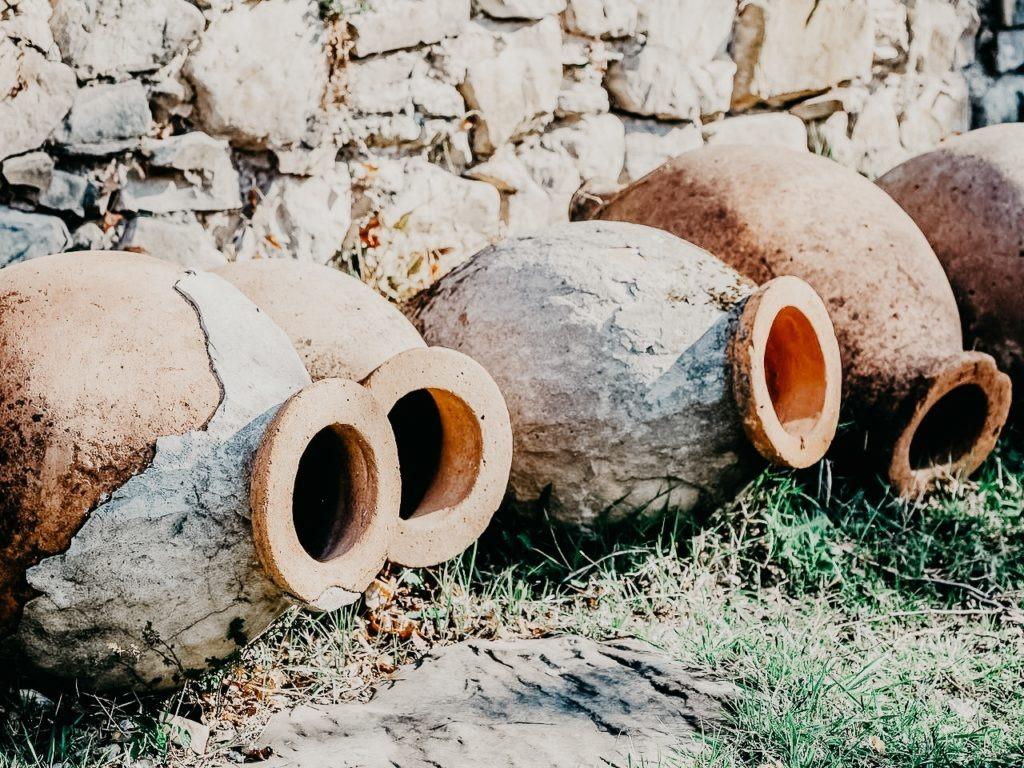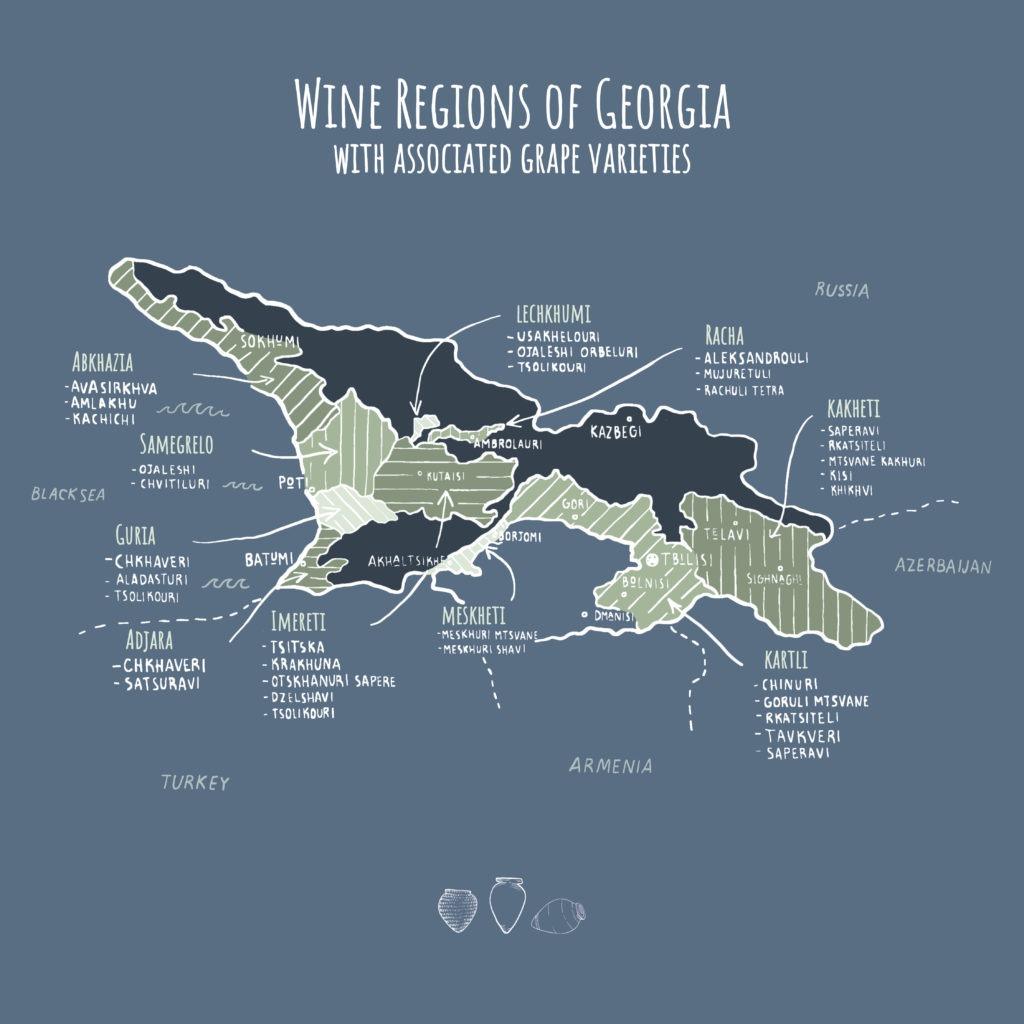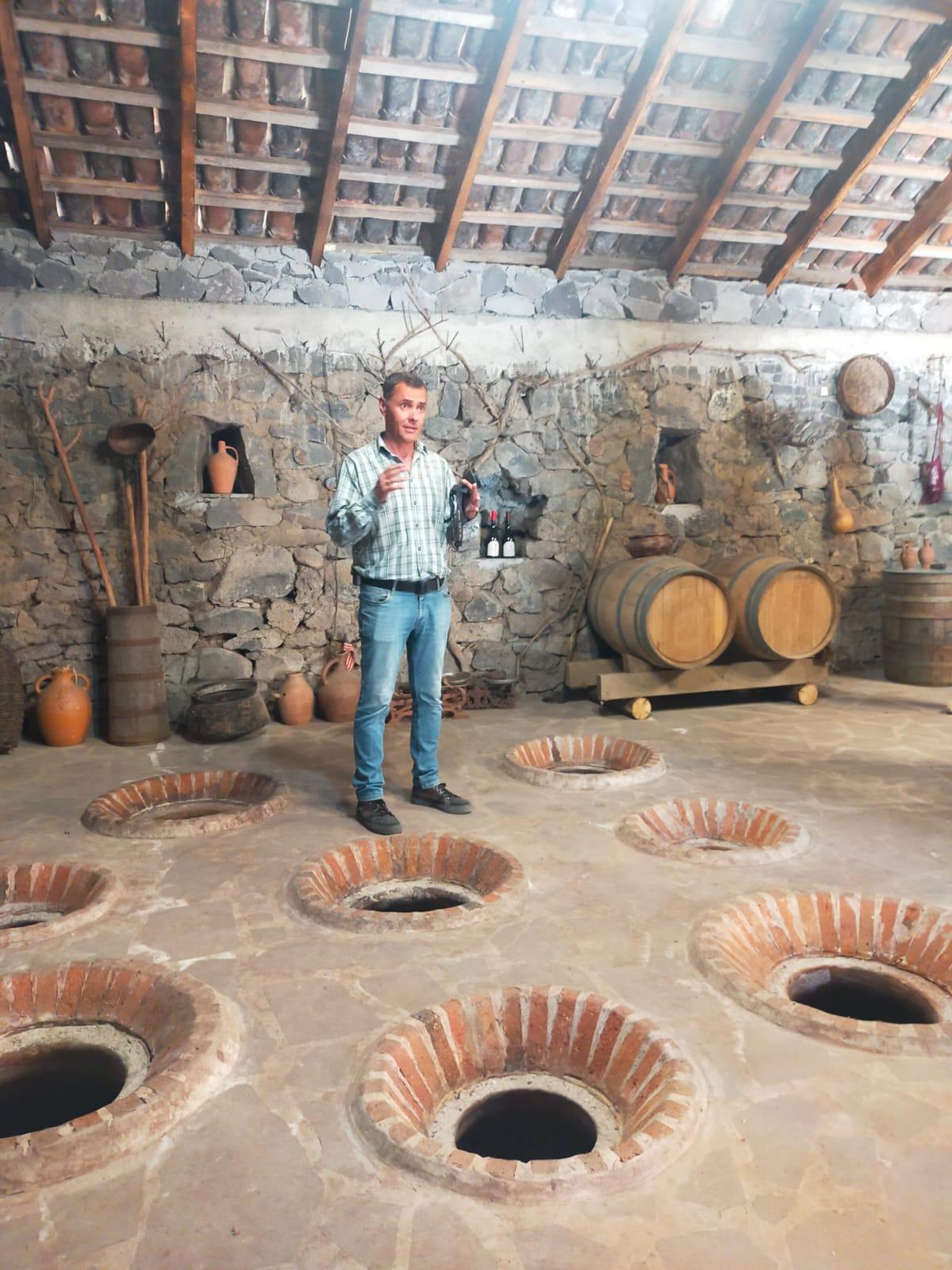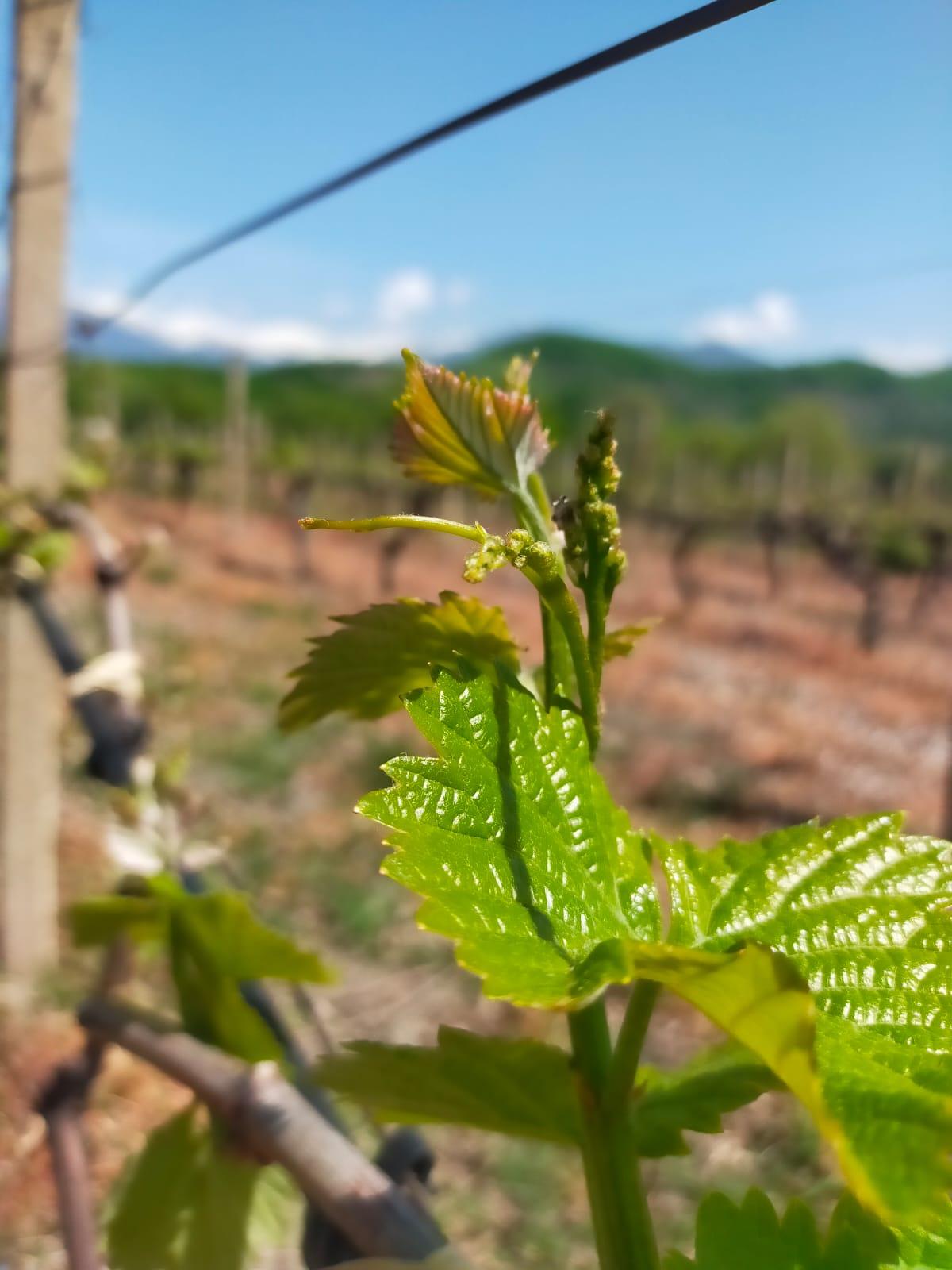- Wine Color/Type
- Top Occasions
- Unique Wines
- Surprise Me!
Exploring the Artisanal Wines of Georgia
The winemaking tradition of Georgia stretches back about 8,000 years, as evidenced by archaeological findings. The discovery of the oldest known winemaking qvevri, unearthed in a Neolithic settlement in eastern Georgia in 2015, has been dated back to 6,000 BCE, breathing new confidence into the Caucasian republic. Among the artifacts found were clay pots containing tartaric acid, an acidity commonly found in wine.
The clay amphoras have become a symbol of Georgian winemaking. (Photo: Copyright Colangelo & Partners)
Georgia has dealt with invasions, pillages, and cultural integrations from neighboring powers. These powers include the Ottomans, Persians, Romans, and Russians. This has happened throughout Georgia's history.
Traditionally, Georgians have employed qvevri—clay pots buried underground—to ferment and age their wines. This unique method, particularly notable for its extended skin contact with whites, results in the creation of traditional orange wines.
Many vintners, constrained by their modest cellars, are at the forefront of the natural wine movement. Larger wineries produce excellent commercial wines that are often fruit-forward. These wines are a great introduction to the diverse range of Georgian wines.
In more recent history, the communist Soviet Union imposed restrictions on private property, prioritizing volume over quality in winemaking. This era saw a proliferation of plantings of Rkatsiteli and Saperavi grapes, at the expense of older varieties and traditional techniques.
Georgians have recently begun rediscovering their heritage varieties. They are bringing these varieties back into cultivation. This has revealed a wealth of diversity similar to Italy.
Georgian wines are expected to get better in the future because of a new winemaking school and more educational efforts. The quality of Georgian wines is predicted to see a significant improvement. This is due to the establishment of a new winemaking school and increased educational initiatives.
Wine map of Georgia (Photo: Copyright Colangelo & Partners)
Georgia is located between the Black Sea and the tall Caucasus Mountains, which can reach heights of up to 5,600 meters. This makes Georgia's geography special. This valley formation acts like a natural oven, trapping heat and creating a microclimate characterized by cool nights and very hotdays. This temperature variation plays a crucial role in preserving the grapes' acidity, imparting a refreshing quality to the wines.
Presently, Kartli and Kakheti are considered the premier wine-growing regions. Kartli is renowned for its whites, including Rkatsiteli, Chinebuli, and Goruli Mtsvane, while Kakheti excels in red varietals like Saperavi and Shavkapito.
In total, the region encompasses about 55,000 hectares of vineyards, roughly half the size of Bordeaux. Georgian vineyards are spread out across the agricultural landscape. In Europe, vineyards are mostly on slopes or in specific areas. Grapes often travel 60 to 90 kilometers to reach the cellar, showing how spread out vineyards are in the region.
The Traditional Winemaking Process
Georgia is known as "the cradle of wine" and is proud of its ancient winemaking traditions. One notable tradition is the use of clay vessels called qvevri, which are buried underground to mature wines. While only around two percent of Georgian wines adhere entirely to this traditional method, contemporary winemakers also utilize inert vessels, French oak, and other modern techniques in their production. However, qvevri wines are still a symbol of small-scale producers, many of whom proudly identify as natural wine makers.
Some Gerogians only produce a few hundred of thousand bottles. (Photo: Peter Douglas)
A unique aspect of Georgian winemaking is the tradition of family-produced wines, often crafted in backyard cellars. Remarkably, Georgia stands as the sole country where casual-winemakers achieve celebrity status.
The winemaking process starts with workers manually harvesting the grapes, and then they transport them to the winery. After destemming, the free-run juice, along with the skins, is transferred into the qvevri—large clay pots buried underground. Fermentation, facilitated by wild yeasts, takes place within these vessels, followed by a natural malolactic fermentation to soften the wine's structure.
After that, the winemaker separates the wine from the skins and transfers it into a second qvevri for maturation. Winemakers often add up to 30% white grape skins to make amber wine with a rich color. Adding skins to the wine makes it richer and gives it a nice texture with smooth tannins. This improves the overall quality and makes the wine more complex.
After aging for approximately 3-6 months, the wine is ready for bottling, coinciding perfectly with the arrival of the next harvest.
Native varieties
Georgia is home to about 550 unique grape varieties. During the Soviet era, Rkatsiteli and Saperavi were popular because they produced a lot of grapes. These two types of grapes still make up about 70% of the plants grown today. However, with careful cultivation and handling, both varieties are capable of producing exceptional wines.
The vineyards are decentralized and integrated into the Georgian landscape. (Photo: Peter Douglas)
Rkatsiteli
As the most prominent white grape, Rkatsiteli is characterized by its brisk acidity and full-bodied profile. Offering delightful notes of honeymelon, pear, and peach, it can be encountered in qvevri or as a sparkling wine.
Goruli Mtsvane
Known as the 'Green from Gori,' this variety originates from a village in Georgia. Its distinctive flavor profile includes bright lime notes accompanied by floral hints, often accompanied by a crisp acidity and a leesy mouthfeel.
Chinebuli
Featuring thick skins and low juice content, Chinebuli allows for a heightened concentration of flavors, including honeymelon, citric notes, and dried peach. Normally, the wine is fermented and aged with the skins for around six months. It shares some characteristics with the white wine Malvasia.
Saperavi
Georgia's premier red grape variety, Saperavi, exhibits moderate to high acidity and robust tannins. The wine has a rich color and delicious taste that make it unique. It has a modern fruity flavor and smooth texture, which is different from the more traditional qvevri-aged wines.
Tavkveri
Noted for its exceptionally bright acidity and pale color, Tavkveri is favored for crafting light wine styles suitable for easy drinking. It is also occasionally employed as a blending partner in sparkling wines, offering a more herbaceous experience than fruity.
Shavkapito
Often referred to as the "Georgian Pinot Noir," Shavkapito is rare with only about 8 hectares of limited plantings. Sporting a pale ruby red hue, it features fine-grained tannins and a savory touch, complemented by aromas of red fruits and a hint of herbaceousness. The finest examples, aged in qvevri, exhibit high finesse and delicacy, showcasing the unique terroir of Georgia.
Peter Douglas
Here is a brief selection of our recommendations:
[insert:wine:baia-s-wine-tsitska-tsolikouri-2021]
[insert:wine:mukhrani-goruli-mtsvane-2019]
[insert:wine:teleda-orgo-saperavi-2019]
Latest articles




